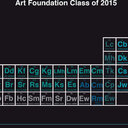Synthesis and preliminary evaluation of (18)F-labeled 4-thia palmitate as a PET tracer of myocardial fatty acid oxidation.
Ключавыя словы
Рэферат
Interest remains strong for the development of a noninvasive technique for assessment of regional fatty acid oxidation rate in the myocardium. (18)F-labeled 4-thia palmitate (FTP, 16-[(18)F]fluoro-4-thia-hexadecanoic acid) has been synthesized and preliminarily evaluated as a metabolically trapped probe of myocardial fatty acid oxidation for positron emission tomography (PET). The radiotracer is synthesized by Kryptofix 2.2.2/K(2)CO(3) assisted nucleophilic radiofluorination of an iodo-ester precursor, followed by alkaline hydrolysis and by purification by reverse phase high performance liquid chromatography. Biodistribution studies in rats showed high uptake and long retention of FTP in heart, liver, and kidneys consistent with relatively high fatty acid oxidation rates in these tissues. Inhibition of carnitine palmitoyl-transferase-I caused an 80% reduction in myocardial uptake, suggesting the dependence of trapping on the transport of tracer into the mitochondrion. Experiments with perfused rat hearts showed that the estimates of the fractional metabolic trapping rate (FR) of FTP tracked inhibition of oxidation rate of palmitate with hypoxia, whereas the FR of the 6-thia analog 17-[(18)F]fluoro-6-thia-heptadecanoic acid was insensitive to hypoxia. In vivo defluorination of FTP in the rat was evidenced by bone uptake of radioactivity. A PET imaging study with FTP in normal swine showed excellent myocardial images, prolonged myocardial retention, and no bone uptake of radioactivity up to 3 h, the last finding suggesting a species dependence for defluorination of the omega-labeled fatty acid. The results support further investigation of FTP as a potential PET tracer for assessing regional fatty acid oxidation rate in the human myocardium.


